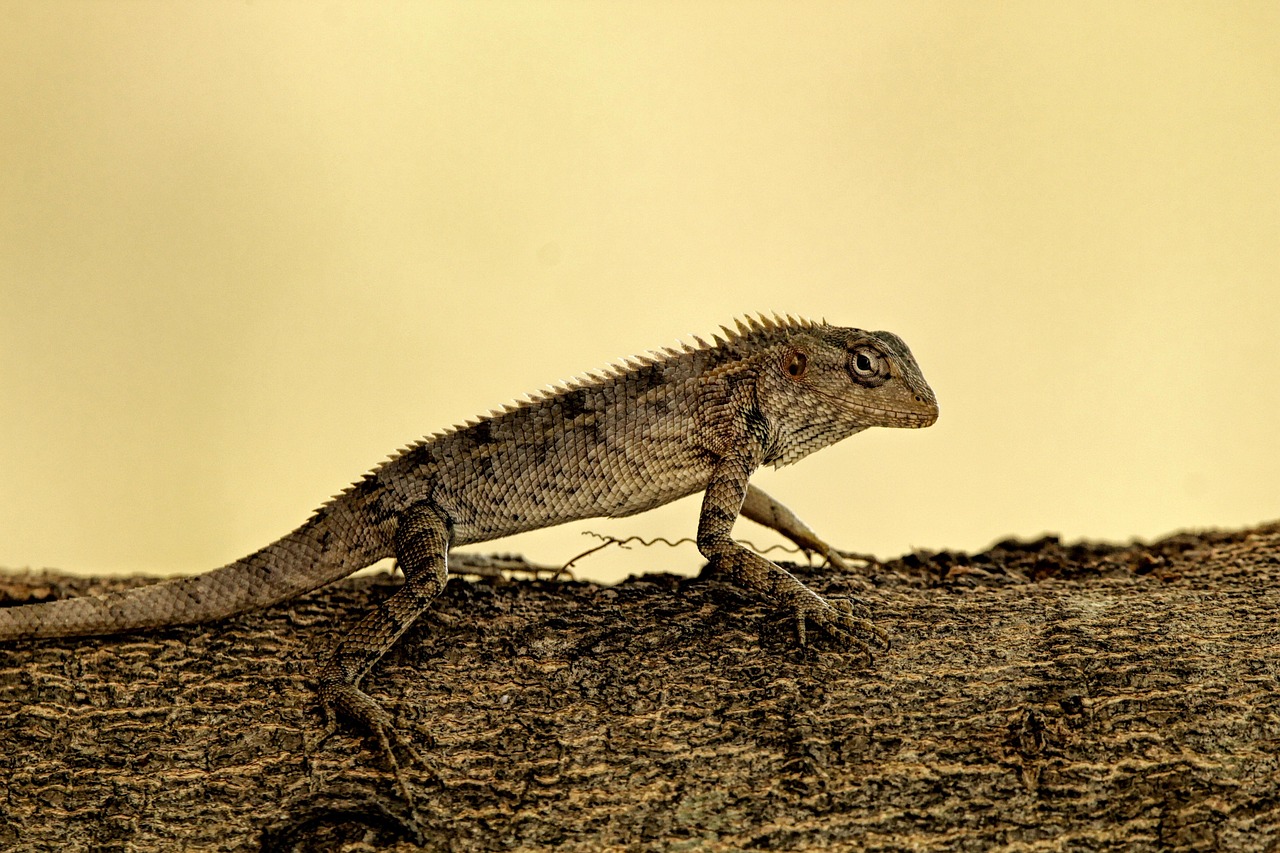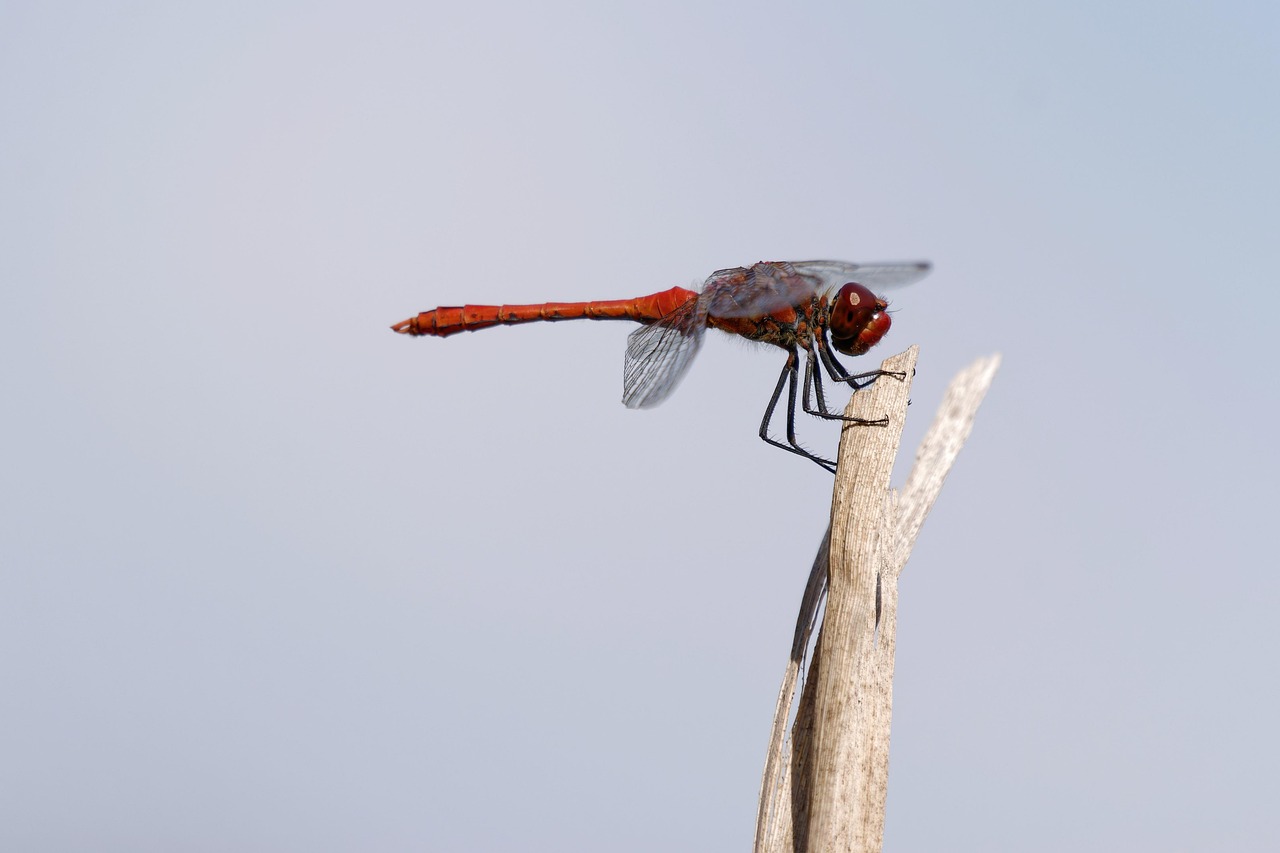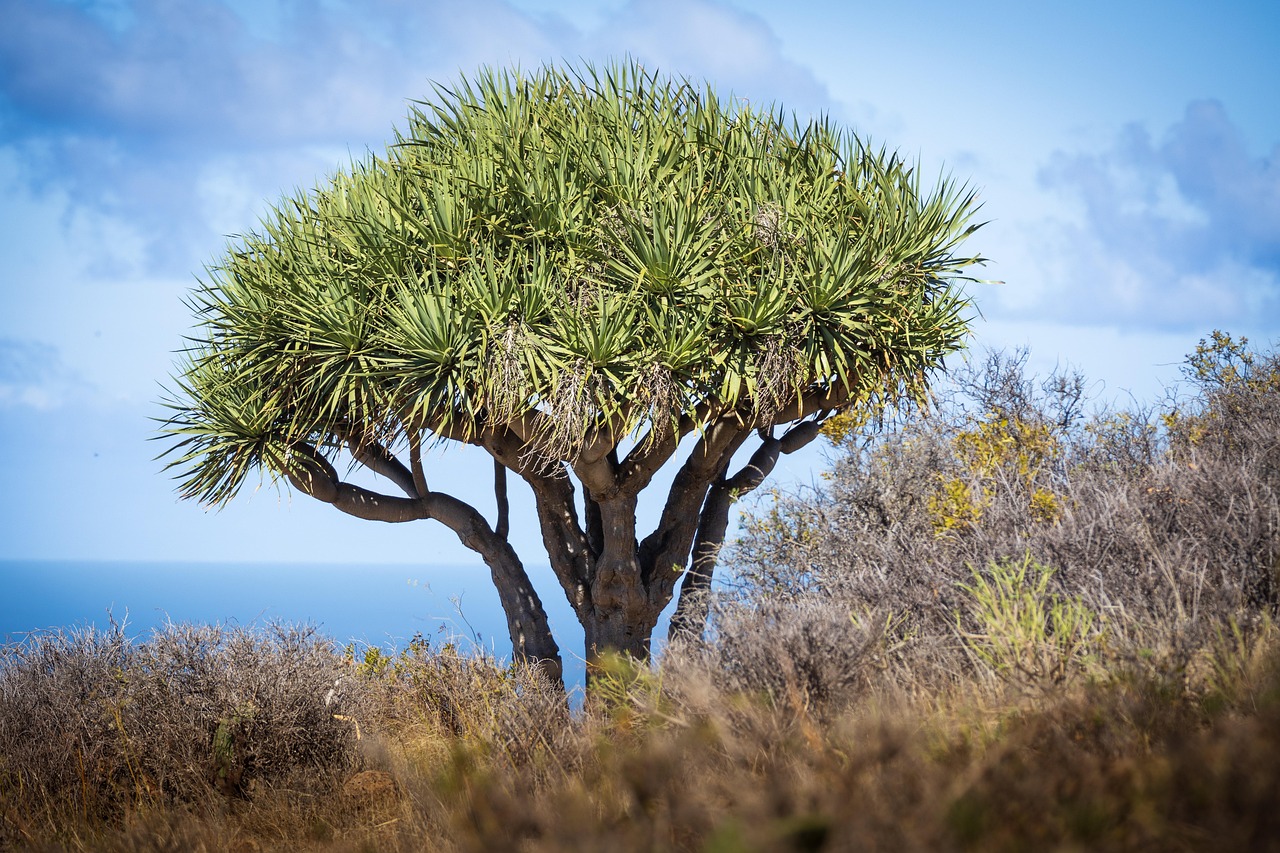The Dragon Tree, known for its striking appearance and hardiness, typically grows at a rate of 12 to 24 inches per year indoors and can reach up to 36 inches annually outdoors in optimal conditions.
The Dragon Tree, or Dracaena draco, is a popular houseplant and outdoor specimen known for its unique, spiky leaves and thick trunk. Native to the Canary Islands, Cape Verde, and Morocco, this tree can thrive both indoors and outdoors. Understanding its growth rate is essential for proper care and maintenance. The growth rate can vary significantly based on several factors, including light, water, soil type, and environmental conditions.

When grown indoors, the Dragon Tree typically grows slower than when it is planted outside. Indoor conditions often limit the amount of natural light and space available for growth. Conversely, outdoor cultivation allows the tree to reach its full potential, provided it is planted in a suitable climate and soil. It’s important to note that while these trees are hardy, they still require specific care to thrive.
Factors Influencing Growth Rate
Several factors influence how quickly a Dragon Tree grows. Understanding these factors can help you create the ideal environment for your plant.
- Light: Dragon Trees prefer bright, indirect sunlight. Inadequate light can slow growth significantly.
- Water: Overwatering or underwatering can affect growth rates. The soil should be kept moist but not soggy.
- Soil Type: Well-draining soil is essential. A mix designed for cacti or succulents works well.
- Temperature: Ideal temperatures range from 65°F to 80°F (18°C to 27°C). Cold drafts can hinder growth.
- Humidity: Moderate humidity levels are best. A dry environment can stress the plant and slow growth.
Understanding these factors can help you create the best conditions for your Dragon Tree, whether indoors or outdoors. Additionally, knowing how to adjust these conditions based on your plant’s needs can enhance its health and growth rate.

Growth Rate Comparison: Indoors vs. Outdoors
The growth rate of the Dragon Tree can differ significantly based on where it is planted. Below is a comparison of growth rates in both environments:
| Condition | Average Growth Rate (Per Year) | Optimal Conditions |
|---|---|---|
| Indoors | 12 to 24 inches | Bright indirect light, well-draining soil |
| Outdoors | 24 to 36 inches | Full sun to partial shade, well-draining soil |
As illustrated in the table, outdoor Dragon Trees tend to grow faster than their indoor counterparts. This difference can be attributed to better access to sunlight and more space for root expansion. Furthermore, outdoor trees are more exposed to natural rainfall and temperature fluctuations, which can also contribute to their growth rate.
A key point to remember is that while outdoor environments may promote faster growth, they also expose the plant to potential stresses such as pests and extreme weather conditions. Indoor care allows for a more controlled environment but may require more attention to artificial lighting and watering schedules.

In summary, whether you’re growing a Dragon Tree indoors or outdoors, understanding its growth rate and the factors that influence it is crucial for fostering a healthy plant. With proper care, your Dragon Tree can thrive and become a stunning addition to your home or garden.
Optimal Conditions for Growth
Understanding the optimal conditions for Dragon Tree growth is essential for anyone looking to cultivate this unique plant. Both indoor and outdoor environments have specific requirements that, when met, can maximize growth rates and overall health.
Indoor Growth Conditions
When grown indoors, the Dragon Tree thrives best under certain conditions. Here are some crucial elements:

- Lighting: Provide bright, indirect sunlight. A spot near a window that receives filtered light is ideal. Avoid direct sunlight, as it can scorch the leaves.
- Watering: Water the plant when the top inch of soil feels dry. It’s better to underwater than overwater, as Dragon Trees are susceptible to root rot.
- Soil: Use a well-draining potting mix. A combination of peat, pine bark, and perlite is often recommended.
- Humidity: The plant prefers moderate humidity levels. If your home is very dry, consider using a humidifier or placing a tray of water near the plant.
- Temperature: Maintain a temperature range between 65°F and 80°F (18°C to 27°C). Avoid sudden temperature changes or drafts.
Outdoor Growth Conditions
For outdoor growth, the Dragon Tree benefits from a different set of conditions:
- Sunlight: Plant in an area that receives full sun to partial shade. Ideally, it should get at least six hours of sunlight daily.
- Soil Quality: Ensure the soil is well-draining and rich in organic matter. Sandy or loamy soils provide the best drainage.
- Watering Needs: While outdoor plants can absorb more natural rainfall, they still need regular watering during dry spells. Monitor soil moisture closely.
- Pest Control: Outdoor plants may attract pests like spider mites and aphids. Regular inspection and natural pest control methods can help.
- Protection from Elements: In regions with extreme weather, consider providing some shelter from harsh winds and heavy rains.
Common Problems and Solutions
Even with the best care, Dragon Trees can encounter issues that affect their growth rate. Identifying these problems early is key to maintaining a healthy plant.
Pests
Pests can significantly hinder the growth of a Dragon Tree. Common pests include:
- Spider Mites: Look for fine webbing on leaves. Increase humidity and use insecticidal soap for treatment.
- Aphids: These can cause leaf curling. Use neem oil or insecticidal soap to eliminate them.
- Scale Insects: Sticky residue on leaves indicates scale presence. Scrape them off and apply treatment with horticultural oil.
Nutrient Deficiencies
Lack of essential nutrients can lead to poor growth. Symptoms include yellowing leaves or stunted growth. To combat this:
- Fertilization: Use a balanced liquid fertilizer during the growing season (spring and summer). A diluted formula every four to six weeks can help.
- Soil Testing: Consider testing your soil for nutrient levels if you notice persistent problems.
Environmental Stress
Environmental factors such as temperature fluctuations or low humidity can stress the plant. Signs of stress include wilting or browning leaf tips. To alleviate stress:
- Avoid Drafts: Position your plant away from heating vents or air conditioning units.
- Monitor Humidity Levels: If your home is dry, especially in winter, consider using a humidifier or grouping plants together to increase humidity.
The Importance of Pruning
Pruning is an important practice for maintaining the health of a Dragon Tree. Regular pruning helps to promote new growth and can prevent disease. Here are some tips for effective pruning:
- Timing: The best time to prune is in early spring before new growth begins.
- Tools: Use clean, sharp scissors or pruning shears to avoid damaging the plant.
- What to Cut: Remove any dead or yellowing leaves and trim back overly long stems to encourage bushier growth.
Proper maintenance through pruning not only enhances the appearance of your Dragon Tree but also contributes to its overall health and growth rate.
Propagation Methods for Dragon Trees
Propagating a Dragon Tree can be a rewarding endeavor for plant enthusiasts. Whether you want to create new plants for your home or share them with friends, understanding the propagation methods is essential. There are two primary methods for propagating Dragon Trees: from cuttings and through offsets.
Propagation from Cuttings
Taking cuttings is a common method to propagate Dragon Trees. Here’s how to do it effectively:
- Select a Healthy Stem: Choose a healthy stem that is at least 6 inches long and has several leaves attached.
- Make the Cut: Using clean, sharp scissors, cut the stem just below a leaf node. This encourages new growth.
- Let it Callous: Allow the cut end to dry and callous for a few hours or overnight. This helps prevent rot when planted.
- Plant the Cutting: Place the cutting in a small pot filled with well-draining soil. Water lightly to settle the soil.
- Provide Care: Keep the cutting in a warm location with bright, indirect light. Water sparingly until roots develop.
This method can take several weeks to months for the cutting to establish roots. Be patient and monitor the moisture levels in the soil.
Propagation through Offsets
Offsets, or pups, are new plants that grow at the base of a mature Dragon Tree. They can be easily separated and planted as new individuals.
- Identify Offsets: Look for small offsets that are at least a few inches tall and have developed their own roots.
- Remove the Offset: Gently pull the offset away from the main plant. Use a clean knife if necessary to cut any connecting roots.
- Prepare for Planting: Allow the offset to dry for a few hours to prevent rot.
- Plant the Offset: Place the offset in a pot with well-draining soil. Water lightly after planting.
- Provide Proper Care: Keep in a warm area with adequate light and water as needed until the plant establishes itself.
Common Diseases Affecting Dragon Trees
While Dragon Trees are generally hardy, they can still be susceptible to certain diseases. Identifying these diseases early can help prevent serious damage. Here are some common issues:
Root Rot
Root rot is one of the most common diseases affecting Dragon Trees, often caused by overwatering or poorly draining soil. Symptoms include:
- Wilting leaves despite moist soil
- Browning leaf tips
- Dark, mushy roots when inspected
Solution: To address root rot, remove the plant from its pot and inspect the roots. Cut away any rotten parts, then repot in fresh, well-draining soil. Adjust watering practices to allow for proper drying between waterings.
Leaf Spot Disease
This disease manifests as dark spots on leaves and can be caused by fungal infections or overwatering. Symptoms include:
- Dark, water-soaked spots on leaves
- Yellowing around the spots
- Possible leaf drop
Solution: Improve air circulation around the plant and reduce humidity levels. Remove affected leaves and apply fungicidal treatments if necessary.
Pest Infestations
Pests such as spider mites and mealybugs can cause stress and hinder growth. Signs of infestation include:
- Sticky residue on leaves (honeydew)
- Pale or discolored leaves due to feeding
- Visible insects on the plant
Solution: Treat infestations with insecticidal soap or neem oil. Regularly inspect your plants to catch infestations early.
Caring for Mature Dragon Trees
Mature Dragon Trees require specific care to maintain their health and aesthetic appeal. Here are some important care tips:
- Repotting: Mature plants may need repotting every few years to refresh soil nutrients and provide more space for root growth.
- Fertilization: During the growing season, feed your Dragon Tree with a balanced fertilizer every 4-6 weeks to promote healthy growth.
- Avoid Overcrowding: Ensure that mature trees have enough space between them and other plants to allow for adequate airflow.
- Cleansing Leaves: Regularly wipe down leaves with a damp cloth to remove dust and improve photosynthesis.
Caring for mature Dragon Trees involves attention to detail and regular maintenance, ensuring they remain vibrant and healthy throughout their lifecycle.
Additional Considerations for Dragon Tree Care
In addition to the previously discussed care tips, there are several other considerations that can enhance the growth and health of your Dragon Tree, whether it is indoors or outdoors.
Seasonal Adjustments
Seasonal changes can affect your Dragon Tree’s growth and care requirements. Here are key adjustments to consider throughout the year:
- Spring: This is the active growing season. Increase watering frequency as the plant begins to develop new growth. Fertilize regularly to support this growth phase.
- Summer: Ensure the plant gets plenty of bright light. Monitor for pests, as they can be more prevalent in warm weather.
- Fall: Gradually reduce watering as the plant’s growth slows down. It’s a good time for light pruning to shape the plant before winter.
- Winter: Indoor plants may require less water due to lower light levels and cooler temperatures. Keep them away from drafts and heating vents.
Common Myths About Dragon Trees
There are several misconceptions about Dragon Trees that can lead to improper care. Here are a few myths debunked:
- Myth 1: Dragon Trees can thrive in complete darkness.
Fact: While they can tolerate low light, they need bright, indirect sunlight for optimal growth. - Myth 2: Overwatering is the best way to ensure healthy growth.
Fact: Overwatering is a common cause of root rot and can be detrimental to the plant’s health. - Myth 3: Dragon Trees do not need fertilizer.
Fact: Regular fertilization during the growing season promotes healthy growth and vibrant foliage.
Environmental Impact on Growth Rate
The environment in which a Dragon Tree is grown has a significant impact on its growth rate. Factors such as surrounding plants, soil quality, and microclimate can all play a role. Here are some environmental aspects to consider:
- Companion Planting: Surrounding your Dragon Tree with compatible plants can enhance humidity levels and provide a more favorable microclimate.
- Soil Amendments: Adding organic matter such as compost can improve soil structure and nutrient availability, promoting healthier growth.
- Wind Protection: If planting outdoors, consider providing windbreaks to shield young trees from strong gusts, which can damage their leaves and stems.
Conclusion
The Dragon Tree is a remarkable addition to any home or garden, known for its aesthetic appeal and resilience. Understanding its growth rate and care requirements is essential for ensuring it thrives indoors or outdoors. Key factors such as light, soil quality, and proper watering play crucial roles in its growth.
By employing suitable propagation methods, addressing common pests and diseases, and adjusting care based on seasonal changes, you can nurture a healthy Dragon Tree that flourishes over time. Additionally, dispelling myths surrounding this plant will help you provide the best possible care.
With attention to detail and an understanding of its needs, your Dragon Tree can grow into a stunning centerpiece that adds beauty and life to your space. Embrace the journey of caring for this unique plant, and you will be rewarded with its striking presence for years to come.
